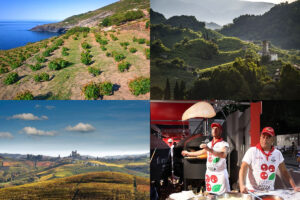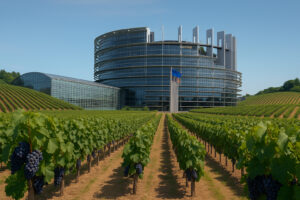The CMO measure on the liberalization of planting rights will soon go into effect. It is a measure that reflects the times, but for the designation of origin production areas it will have nothing short of a devastating impact. The measure, scheduled for 2015, with a possible three year extension (2018) is part of those “market friendly” acts that characterize Regulation 479/2008 and that should facilitate the release of the European wine industry from a sort of widely criticized “protectionism”.
Actually, this measure comes at a particularly delicate economic moment. It certainly is not a form of support to the needs of the wine sector, which focuses purely on quality and gives Europe a leading world role, not only from the standpoint of production potential but above all, in terms of quality.
The impact of this measure could instead have dramatic and very destabilizing consequences without the introduction of other alternative and less radical instruments of production management. Many wine regions in Europe would suddenly be overwhelmed by the phenomena of overproduction, falling prices and job losses. The efforts to date of producers to ensure quality would be questioned, without considering the fact that the asset value of companies would also be lowered. The mere fear of this measure being enforced has already triggered phenomena of this kind, conditioning the market for buying and selling. Its disastrous effect would also, more generally, impact the value of the historical territories of denomination of origin wines, where the proliferation of vineyards would lead to a sudden imbalance in the environment, literally changing the “layout” of the most popular and sought after landscape icons.
The measure would have a generally negative impact on Burgundy, Montalcino, Bordeaux, Chianti Classico, Champagne, and Langhe. However, these high vocation areas (which usually are closed vineyards) could continue to maintain their current status, if state and federal laws remained unchanged.
Starting December 31, 2015, we could be facing abnormal production. For example, in order to fully understand the scope of the issue: the areas of Côtes-du-Rhône vineyards could increase from 61.000 to 120.000 hectares; in Chianti from 17.000 to 35.000 hectares and Rioja from 60.000 to 200.000. These are very high numbers that take on a catastrophic value if “translated” into terms of bottles. Here too, one example is worth a thousand words: In the Chianti Classico area there are currently 2.500 hectares of vineyards of TGI denomination. Let’s just say that 1.500 hectares are planted with Sangiovese grapes. Well, those 1.500 hectares could put 7.5 million bottles (rounded down) of Chianti Classico on the market.
The future scenario does not see a radical clash in the EU to totally eliminate the measure, but changes and compromises (already partly under discussion) are clearly desirable. There are essentially two solutions on the table: a distinction between table wine, and these vineyards can be liberalized; and designation of origin wine, which will maintain the current system of planting rights, a three-year plan agreed between industry and institutions (similar to the case in Tuscany) to establish an increase or decrease in vineyards, depending on market demands.
France and Germany, with their heads of state Sarkozy and Merkel in the lead, have already declared their open dissent to a complete deregulation of production. Spain, Portugal and Italy are on the same wavelength but in Italy only the federation of wine industries, FEDERVINI and the federation for protection of doc wines FEDERDOC have voiced alarm about the measure.
Focus - How the current system of planting rights is implemented
Since 1976, the wine sector has used a tool for production management: planting rights. The basic principle is that new vines can be planted if the grower has the right to plant. These rights are granted if the producer can demonstrate that the market demand has increased for their wines.
This is an indirect way of controlling production through vineyard management in order to stabilize prices and counteract crises due to overproduction. Currently, the areas where denomination of origin wine is made are strictly defined on the basis of historical, agronomic, climatic and orographic criteria. These limited areas are much larger than the cultivated area. The gap between the limited areas and the cultivated area today is more than 1 million hectares (European vineyards are planted in an area of 3.4 million hectares).
Copyright © 2000/2025
Contatti: info@winenews.it
Seguici anche su Twitter: @WineNewsIt
Seguici anche su Facebook: @winenewsit
Questo articolo è tratto dall'archivio di WineNews - Tutti i diritti riservati - Copyright © 2000/2025








































































































































































































